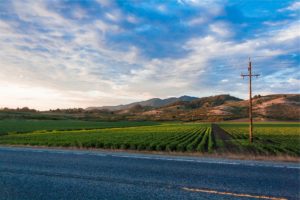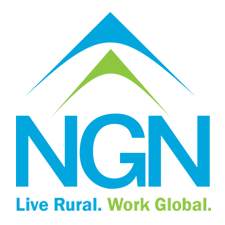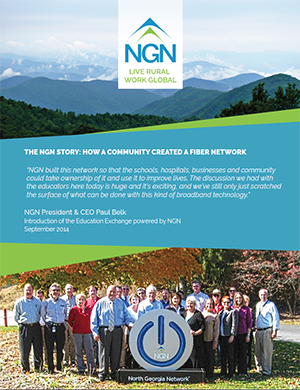 With Thanksgiving just around the corner and 2018 Farm Bill discussions well underway, agriculture talk is on the table here in the U.S. But while many families will soon enjoy bountiful spreads of turkey, sweet potatoes, cranberry sauce and more, the challenging path from farm to table is often forgotten. And as the global population steadily grows and the farming resource pool shrinks right along with it, hurdles along that path are popping up left and right.
With Thanksgiving just around the corner and 2018 Farm Bill discussions well underway, agriculture talk is on the table here in the U.S. But while many families will soon enjoy bountiful spreads of turkey, sweet potatoes, cranberry sauce and more, the challenging path from farm to table is often forgotten. And as the global population steadily grows and the farming resource pool shrinks right along with it, hurdles along that path are popping up left and right.
Before the end-of-year, food-centric holiday season commences, we’d like to take a few minutes to discuss agricultural technology (AgTech) and how it’s allowing farmers to clear those hurdles with the help of high-speed, reliable broadband.
The Basics
So, what is AgTech exactly? It’s technology designed to help farmers increase efficiency, boost precision and do more with less — fewer workers, and less land and water — and it’s burgeoning at least partly out of necessity. After all, farmers are feeding an ever-growing population; we will have two billion more neighbors on the planet by 2050. In 1870, almost half of employed Americans held agriculture jobs, while only two percent hold a job in the field today, according to Forbes’ “25 Most Innovative Ag-Tech Startups.” Though the U.S. has experienced an immense decrease of agricultural workers, many people are also focused on innovations to push the industry forward. Forbes’ list highlights startups that are introducing creative solutions — from farm management software to online marketplaces to pest monitoring/detection[1].
AgTech has also earned attention in Silicon Valley in recent years. Since 2014, investors have backed AgTech inventions with more than $10 billion. Of the $3.2 billion invested last year, 40 percent went to food service and e-commerce solutions, 22 percent was for biotechnology tools and 11 percent funded farm management software[2].
An Essential Piece: Broadband
 While the investment pouring into AgTech is promising for farmers everywhere, many of the technologies are only helpful if they’re connected to reliable, fast internet.
While the investment pouring into AgTech is promising for farmers everywhere, many of the technologies are only helpful if they’re connected to reliable, fast internet.
As a fourth-generation Michigan apple and grain farmer put it, “As we move further into the 21st century, it has become increasingly important that my farm business is consistently and reliably connected.” He counts on precision agriculture, drones and reliable broadband to manage his 2,000 acres of crops[3].
Another one of the many real-world examples is found in an article by CircleID, which features the story of a California farmer who discovered a loose drip irrigation wire — and potentially saved his olive and grape fields for the season — with the help of a broadband-powered control system that monitors and collects data about his crops[4]. This was only possible because of recent infrastructure advances in his area; up until a few years ago, his download speeds lagged. Now, broadband is so important to his operation that he has three ways of connecting to the internet, just in case. Unfortunately for farmers in the rest of the nation, California is ahead of many other states when it comes to broadband access.
Rural broadband in relation to agriculture has been in the news over the past few months. After touring an Iowa college campus’ agricultural facilities in June, President Donald Trump pledged to include rural broadband in his $1 trillion infrastructure plan. “A key concern among farm lobbies is lower broadband adoption rates are effectively stalling economic development efforts,” FierceTelecom explains. High-speed internet access is clearly lacking in rural areas; 25 Mbps broadband is available to 94 percent of urban residents but only 55 percent of those living in rural America[5].
Most recently, the Federal Communications Commission (FCC) has been considering new guidelines for defining broadband, which could affect the amount of funding that’s available to boost rural broadband infrastructure[6].
Our Take
NGN believes in supporting the nation at its roots: the community level — from anchor institutions such as schools and libraries to local farms. We think everyone deserves access to broadband at home and in the office (or field), from city dwellers to small town business owners to farmers working extremely rural land.
That’s why we built a state-of-the-art fiber network — a broadband super highway — connecting the Southeast starting with our headquarters in North Georgia. Our goal remains to help rural communities experience broadband speeds that rival the fastest in the world. We empower our customers to “Live Rural. Work Global,” and part of that is enabling farmers to help feed the world.
Learn more about NGN’s network here and follow us on Facebook, Twitter and LinkedIn for our latest news.
[1] https://www.forbes.com/sites/maggiemcgrath/2017/06/28/the-25-most-innovative-ag-tech-startups/#6b03d6ab4883
[2] https://www.agweb.com/article/agtech-investment-is-booming-naa-susan-skiles-luke/
[3] http://www.farmersadvance.com/story/news/2017/08/28/michigan-farmer-talks-5-g-benefits-technology/607456001/
[4] http://www.circleid.com/posts/20170826_why_farmers_are_using_wifi_to_grow_your_grapes/
[5] http://www.fiercetelecom.com/telecom/trump-incorporates-rural-broadband-into-1t-infrastructure-proposal
[6] https://www.wired.com/story/redefining-broadband-could-slow-rollout-in-rural-areas/


